Maximizing the One-Shot
Maximizing the One-Shot
Connecting Library Instruction with the Curriculum
Jill Markgraf, Kate Hinnant, Eric Jennings, and Hans Kishel
Rowman & Littlefield
Lanham Boulder New York London
Published by Rowman & Littlefield
A wholly owned subsidiary of The Rowman & Littlefield Publishing Group, Inc.
4501 Forbes Boulevard, Suite 200, Lanham, Maryland 20706
www.rowman.com
Unit A, Whitacre Mews, 26-34 Stannary Street, London SE11 4AB
Copyright 2015 by Rowman & Littlefield Publishers, Inc.
All rights reserved . No part of this book may be reproduced in any form or by any electronic or mechanical means, including information storage and retrieval systems, without written permission from the publisher, except by a reviewer who may quote passages in a review.
British Library Cataloguing in Publication Information Available
Library of Congress Cataloging-in-Publication Data
Markgraf, Jill, 1962
Maximizing the one-shot : connecting library instruction with the curriculum / Jill Markgraf, Kate Hinnant, Eric Jennings, Hans Kishel.
pages cm
Includes bibliographical references and index.
ISBN 978-1-4422-3865-7 (cloth : alk. paper) ISBN 978-1-4422-3866-4 (pbk. : alk. paper) ISBN 978-1-4422-3867-1 (ebook) 1. Academic librariesRelations with faculty and curriculum. 2. Information literacyStudy and teaching (Higher) 3. Library orientation for college students. 4. ResearchMethodologyStudy and teaching (Higher) I. Hinnant, Kate, 1970 II. Jennings, Eric, 1982 III. Kishel, Hans. IV. Title.
Z675.U5M3373 2015
025.5'677dc23 2014048170
 The paper used in this publication meets the minimum requirements of American National Standard for Information SciencesPermanence of Paper for Printed Library Materials, ANSI/NISO Z39.48-1992.
The paper used in this publication meets the minimum requirements of American National Standard for Information SciencesPermanence of Paper for Printed Library Materials, ANSI/NISO Z39.48-1992.
Printed in the United States of America
Acknowledgments
When we were approached about turning our article on using Lesson Study in collaboration with English faculty published in College & Research Libraries into a book, we wondered whether or not we could do it. Each person on this team brought something to the table that made it possible, and we want to thank each other for all of the work that it took to put it together. When you have a great team, it makes tasks like this easier to accomplish.
We also want to thank our colleagues in McIntyre Library for encouraging us throughout this yearlong endeavor. We especially want to acknowledge our fellow instruction librarians, whose ongoing commitment to our one-shot curriculum has helped inspire this book. We thank our library director, John Pollitz, for his positivity and encouragement. Finally, a special note of gratitude goes to our colleagues at the University of WisconsinEau Claire with whom we worked on the Lesson Study collaborations discussed in this book. We are fortunate to work with such committed faculty and are grateful for their thoughtful contributions to chapter 10 of this book: Bob Eierman, Shevaun Watson, Cathy Rex, Angie Stombaugh, Rita Sperstad, and Arin VanWormer.
Introduction
With a name that belongs in a John Wayne movie, and a reputation that elicits both resistance and celebration, the library one-shot instruction session is the subject of this book. Typically taught in a 50-minute period, the one-shot involves bringing a single class and a librarian together. Historically, the one-shot has run the gamut from covering library services to search tools to research strategies, using methods ranging from lectures and scavenger hunts to more open-ended active learning sessions.
In recent years, as librarians have devoted more attention to the assessment of their information literacy programs, the value of the one-shot library lesson has come into question. Article titles such as Why One-Shot Information Literacy Sessions Are Not the Future of Instruction: A Case for Online Credit Courses and Life Beyond the One-Shot: Teaching a For-Credit Course suggest a determination to move beyond the one-shot to information literacy programs that include credit courses, embedded librarianship, and other, more extended models. At the same time, other researchers have focused on how assessment can be used to improve one-shot lessons and how active learning can transform their nature.
There are, of course, institutional factors that inform how likely it is that an academic library is going to transition from the one-shot to another form of library instruction: staffing, allocation of academic credits, instructional needs, and even space. And there can be no doubt that these factors are the primary reasons why the one-shot lesson is still a dominant form of library instruction.
But it is our contention that the one-shot is not a dead end. We argue instead that the one-shot can be cultivated into a dynamic lesson, responsive to the changes in the curriculum and scaffolded based on the needs and intellectual developments of the students. In this book, we describe the Lesson Study process that we used at the University of WisconsinEau Claire, but we know that there are many approaches to lesson creation that promote the development of shared goals and objectives between librarians and disciplinary faculty. We argue that collaboration is an essential ingredient in making the one-shot a success. By taking a collaborative approach in the assessment and revision of their one-shots, librarians can raise their visibility as the go-to partners in inquiry instruction, whether at the first-year level or beyond.
Definitions
Throughout this book we use the term information literacy to refer to the broader goals and objectives involving finding, accessing, evaluating, creating, and responsibly using information. When we refer to the library lesson , we mean the individual one-shot lesson. Other information lessons, such as out-of-class assignments or information literacy lesson plans to be carried out by disciplinary faculty, are identified as such in the text. Librarians and library faculty are used interchangeably, though we realize that not every academic library uses faculty status for its librarians. Team refers to all members of a collaborative project or Lesson Study, including both librarians and disciplinary faculty.
The Book
Though our book centers on our experience revising several one-shots, including lessons for first-year composition and nursing, we have tried to make what we have learned relevant to a wide variety of contexts. We describe our process, but also share guidelines and takeaways we have learned from both research and experience.
In chapter 1, we review the place of the one-shot within the history of information literacy in higher education. We also describe traditional one-shot formats, as well as the institutional constraints that make the one-shot prevalent as a mode of delivering library instruction. Finally, we outline the lack of curricular integration typical with one-shots.
Chapter 2 addresses the reasons for changing the way we approach the one-shot, as well as how to embark on such a project. Potential hurdles are discussed, and early decisions librarians need to make are laid out. Finally, there is a section on enacting transformational change.
Since collaboration is a large part of the process we describe, we devote the beginning of chapter 3 to identifying local institutional structures that can support a collaborative effort like one-shot revision. We also introduce Lesson Study, the process we used in revising several of our one-shots, and describe the planning phase of our first Lesson Study experience: a collaboration between the library and first-year composition instructors. In chapter 4, we continue the description of the Lesson Study method by describing how we taught and assessed our new first-year composition courses one-shot lesson, following up with revisions to the initial lesson.
Next page
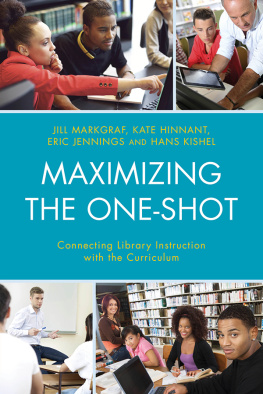
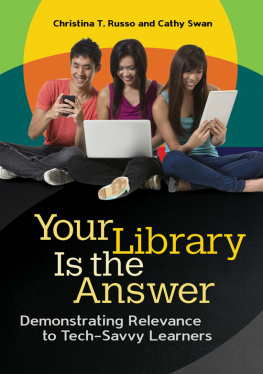
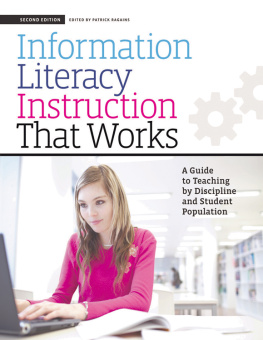
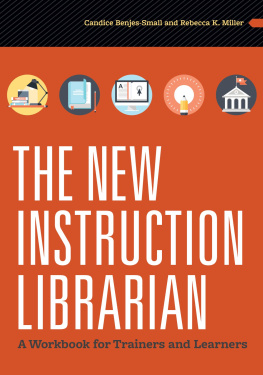

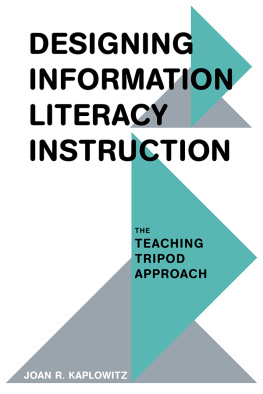
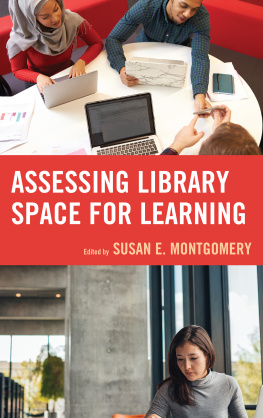
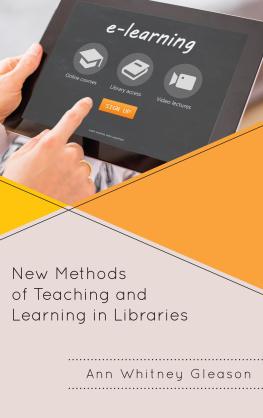
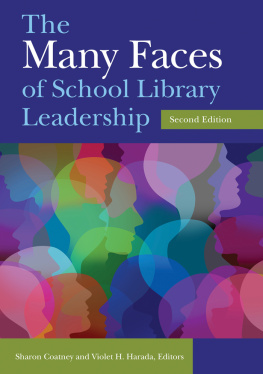

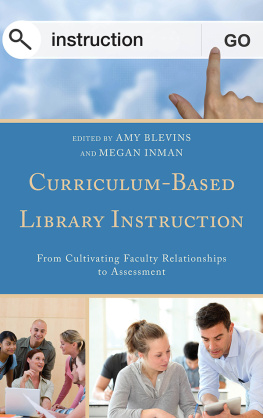
 The paper used in this publication meets the minimum requirements of American National Standard for Information SciencesPermanence of Paper for Printed Library Materials, ANSI/NISO Z39.48-1992.
The paper used in this publication meets the minimum requirements of American National Standard for Information SciencesPermanence of Paper for Printed Library Materials, ANSI/NISO Z39.48-1992.